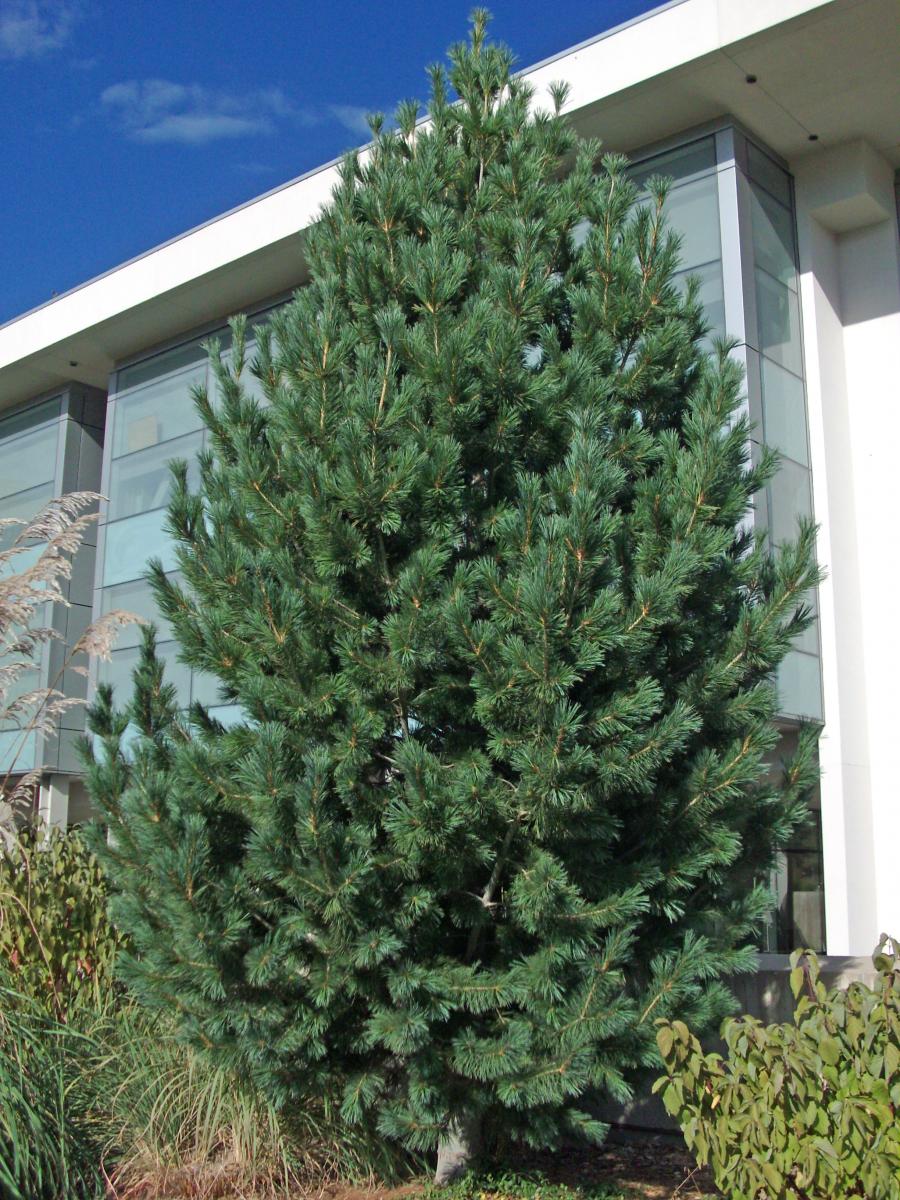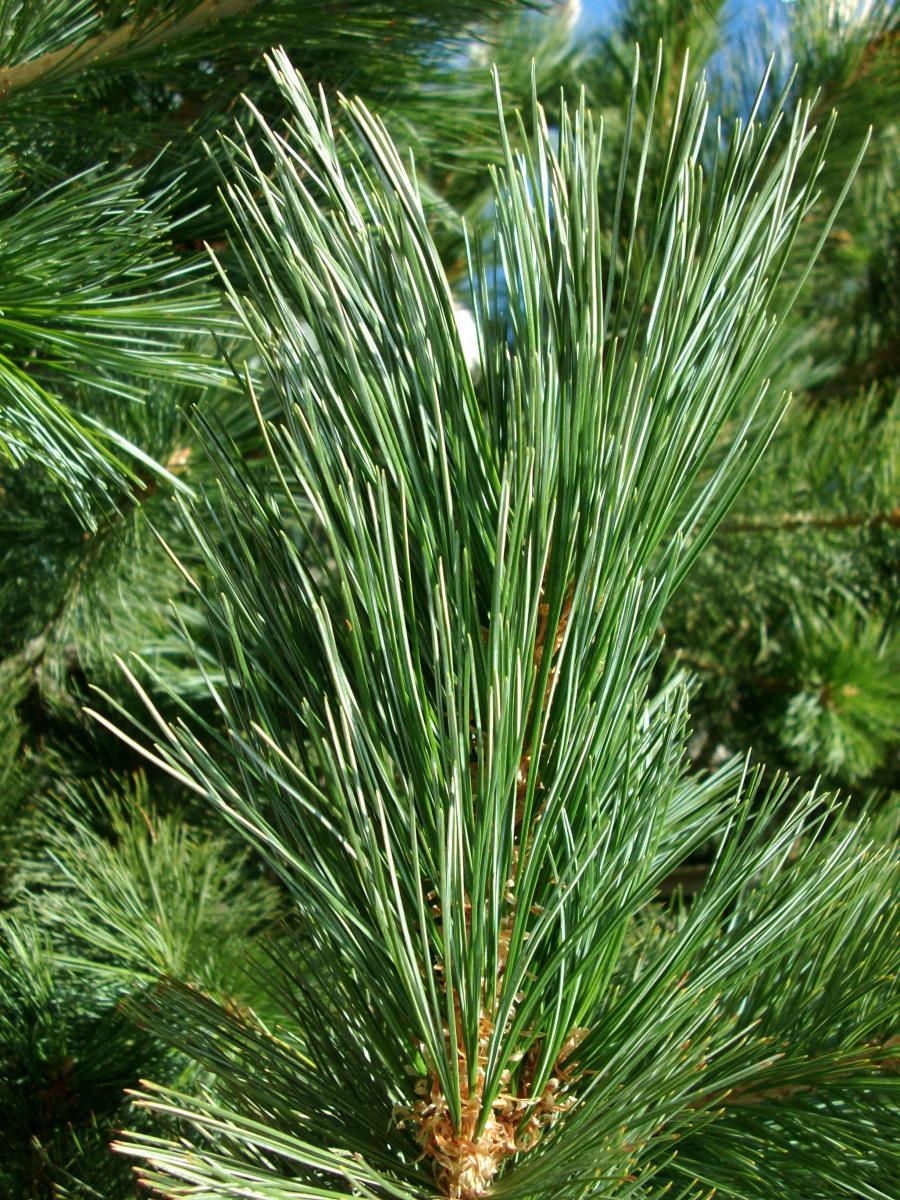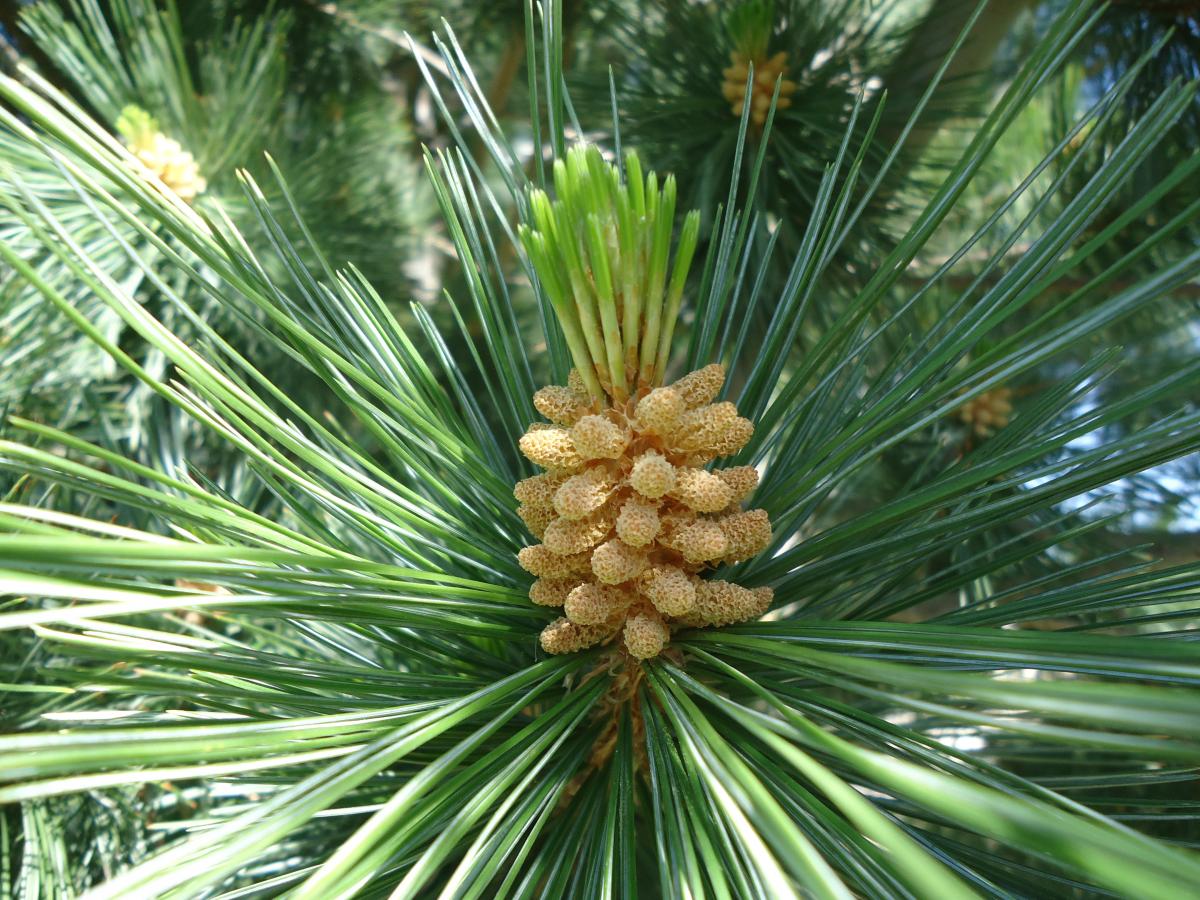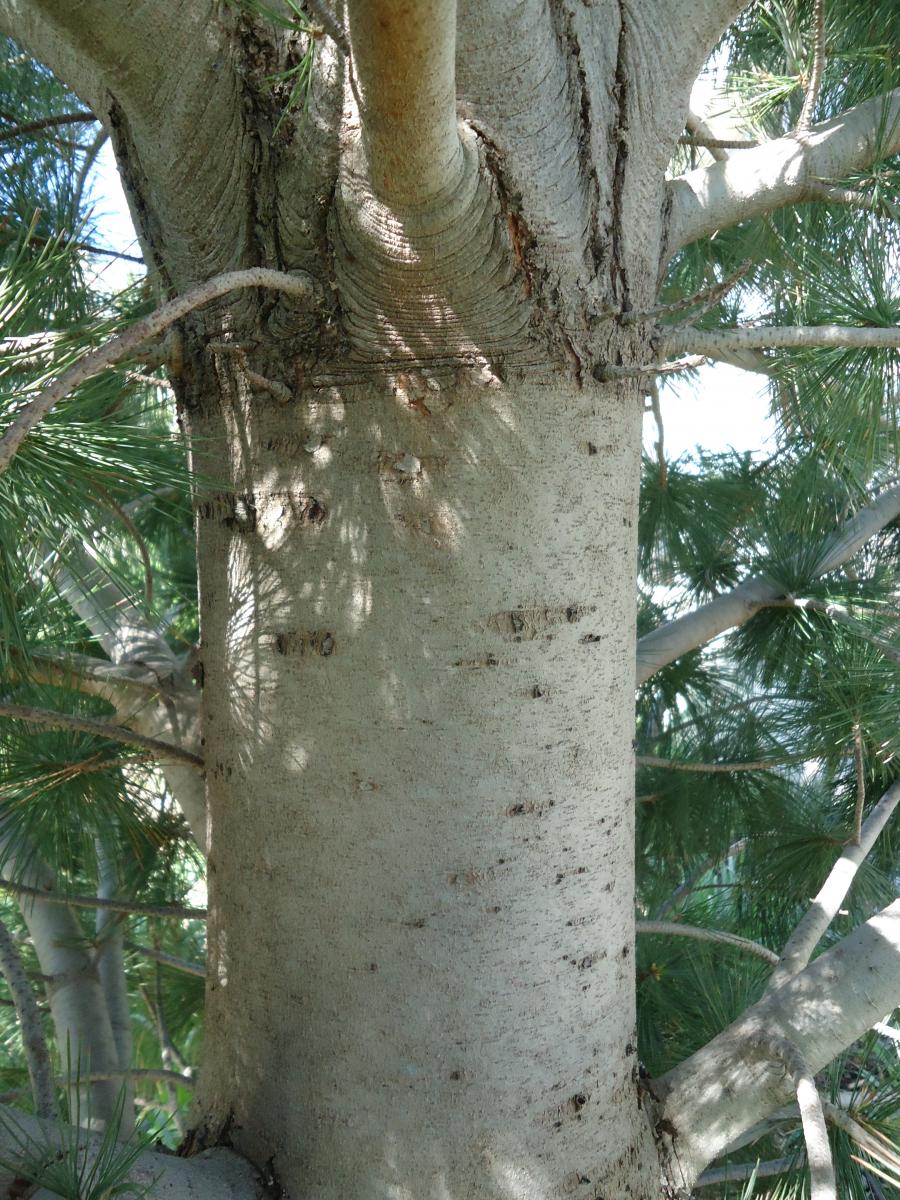Limber Pine




Pinus flexilis
Leaves: Evergreen. Needles are thin, flexible, sharply pointed, and slightly twisted. Needles are 2½ to 3½ inches long with thin, white lines running along their length and grow in bundles of 5. Needle groups cluster at the ends of branchlets and point outwards. Branches are flexible and could almost be tied in knots. Dark, bluish green color needles, sometimes greyish to silver blue-green.
Bark/Twigs: Bark is thin, smooth, and light grey when younger. As the tree ages, fissures form rectangular shapes in the trunk and bark turns grey-brown.
Flowers/Fruit: Inconspicuous flowers during late spring or early summer. Rosey, purple, or green in color. Male cones are small and light orange, mostly inconspicuous. Female cones are narrow, 3 to 6 inches long, light brown, and woody. Female cones grow either alone or in groups of 2 to 3.
Mature size and shape: Large. 30 to 50 feet high x 15 to 35 feet wide. Usually ½ as wide as tall.
General information/special features: Plant in full sun to partial shade. Well-drained soil preferred. Does tolerate drier conditions or compacted soil. Well-adapted for rocky soils and alkaline conditions. Do not overwater. National champion is 58 feet by 46 feet at Uinta National Forest, UT.
Landscape use and maintenance: Native to higher elevations in Utah. Graceful ornamental pine with soft needles. Makes a great specimen but not an effective wind break. Slow growing rate. Low maintenance. Transplants well.
USDA Hardiness Zone: 4 to 7
Family/Origin: Pinaceae – Pine. Native to higher elevations in Utah and the interior West.
Campus Use: Somewhat common. Can be found south of Marriott Library (Bld 86) or south of the Union Building (Bld 53).
